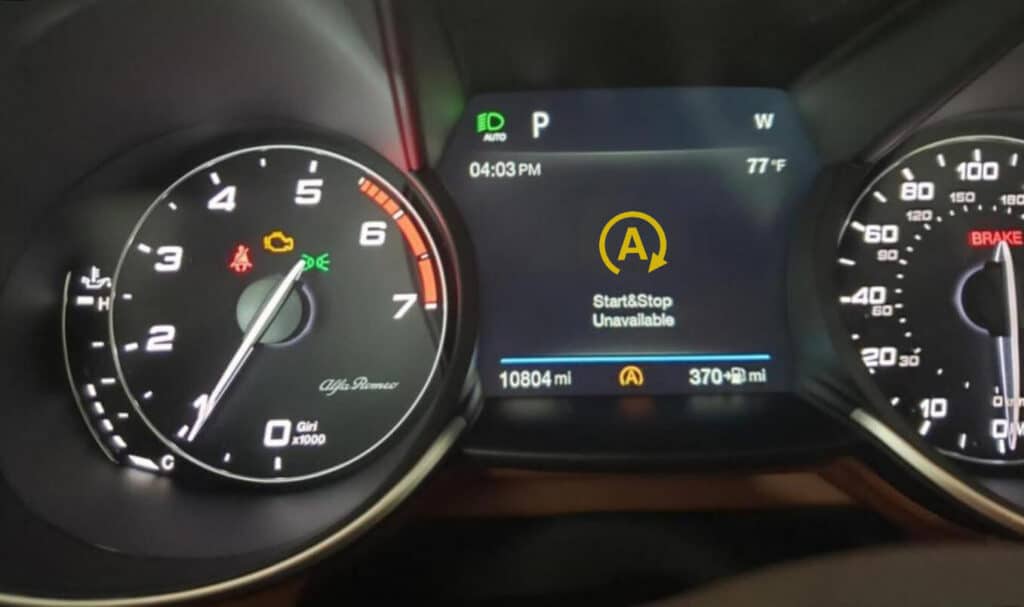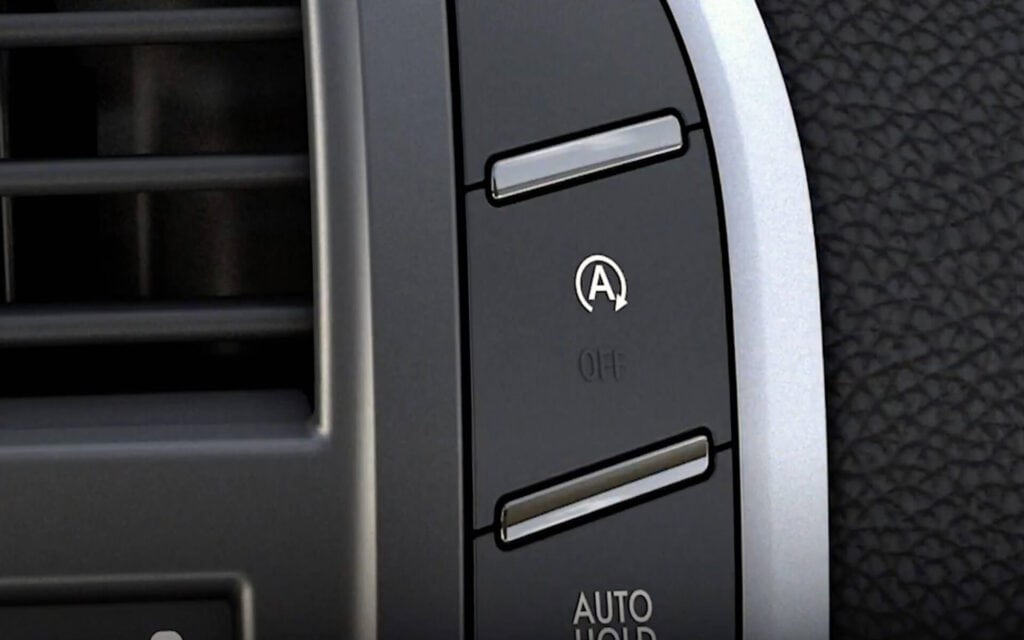Navigating the Start-Stop Terrain of Modern Cars
Auto start-stop technology has become the car industry’s response to increased fuel efficiency and reduced carbon emissions demands. This innovative feature, although met with mixed emotions by some drivers, signifies the evolution of car engineering. By understanding its functionality and warning systems, drivers can maximize benefits and ensure safe operations.
Decoding the Lights: What Does the Start-Stop Warning Light Signify?
• System Status Indicator: If the light is stable and green, it means the start-stop system is functional and ready for use.
• Operational Prompt: When the car stops, say at a traffic light, and the system is working correctly, the light stays on to indicate it’s activated.
• Amber Alert: A steady amber light doesn’t mean immediate danger, but it’s signaling an issue with the system that needs attention.
• Blinking Indicator: If the light ever starts flashing, regardless of color, it’s a stronger indication that the system may be malfunctioning.
• Vehicle’s Message: It’s essentially your vehicle’s way of communicating its start-stop system’s health. Keeping an eye on it ensures the system operates efficiently.

Behind the Scenes: How Auto Start-Stop Works and What Triggers It
At its core, the system uses an array of sophisticated sensors and intricate algorithms to monitor and react to the vehicle’s conditions and the driver’s actions. For instance, when your vehicle slows down and comes to a complete stop – let’s say at a traffic light or in a bumper-to-bumper traffic scenario – the system identifies this idle state. Recognizing that the engine doesn’t need to be running, the system automatically switches it off, thereby conserving fuel that would otherwise be spent needlessly.
But it’s not just about turning off the engine. The true marvel of this system is its responsiveness. The moment you lift your foot off the brake or engage the clutch (in manual transmissions), the engine springs back to life, ready to propel the vehicle forward. This near-instantaneous restart ensures that the driver experiences minimal delay, making the entire process smooth and virtually unnoticeable.
Factors Influencing the Auto Start-Stop System:
• System Integration: The auto start-stop system doesn’t function in isolation; it collaborates with other vehicle systems to ascertain optimal activation conditions.
• Battery Charge: A critical determinant. If the battery isn’t sufficiently charged, the system might opt against activation since engine restart demands a certain energy level.
• Engine Temperature: The system monitors engine warmth. If the engine hasn’t reached its optimal temperature or is overheated, the system may stay inactive to ensure the engine’s longevity.
• Cabin Comfort: The ambient temperature inside the vehicle matters. For example, on a chilly day with the heater running, the system might avoid activating to maintain a cozy cabin environment.
• Balancing Act: The primary goal is fuel efficiency, but the system is designed to balance efficiency with vehicle performance and passenger comfort.
Battery Battles: The Special Requirements of Start-Stop Systems
• Distinct Design: Start-stop batteries are tailored for the start-stop system’s unique demands, unlike traditional batteries. They’re engineered specifically to handle the rigorous start and stop cycles that this system demands.
• Enhanced Durability: These batteries boast a robust build. The frequent stopping and starting of the engine necessitate a battery that can handle multiple discharges and recharges without degrading swiftly.
• Specific Power Needs: A start-stop battery delivers quick bursts of energy to restart the engine, rather than a prolonged, steady power supply. This contrasts with conventional batteries that primarily serve to start the engine initially and then provide a stable power supply for electronics.
• Higher Cycle Lifespan: Due to the recurrent on-and-off cycles, start-stop batteries are crafted to endure a more significant number of total life cycles compared to their conventional counterparts.
• Recognition by Appearance: While they might look somewhat similar, start-stop batteries often have distinct labels or markings, setting them apart from regular batteries. This makes identification easier when purchasing or replacing.
• Special Care Needs: Given their unique design and function, start-stop batteries require specific maintenance procedures. For instance, using a standard charger might not be ideal for these batteries, emphasizing the need for specialized care.
• Cost Implications: Generally, due to their enhanced design and features, start-stop batteries tend to be more expensive than conventional batteries. However, their extended lifespan and fuel-saving benefits often justify the price in the long run.
Savings vs. Spending: Does Start-Stop Really Help with Fuel Efficiency?
Fuel efficiency has become a central concern for today’s drivers. Escalating fuel prices, combined with an increased awareness of our environmental footprint, has ushered in a host of technological solutions. Among these, the auto start-stop system stands out. Designed to turn off the engine during short stops and restart it almost instantaneously when you’re ready to roll, it promises both fuel savings and reduced emissions.
Concrete data points to an increase in fuel efficiency by about 5-7% in real-world stop-and-go traffic conditions. While these figures might seem modest, consider the cumulative savings over extended periods. For those who regularly navigate city traffic or commute daily, the long-term cost benefits become evident. Furthermore, less fuel consumption means reduced carbon emissions—a win-win for both the driver and the environment.

Managing Malfunctions: Recognizing and Addressing Start-Stop Failures
Modern vehicle technology, with its myriad of benefits, is not without its occasional quirks. The auto start-stop system, while an ingenious addition to the modern car’s arsenal, is not exempt from this rule. For users of this technology, understanding potential hiccups can be the difference between a minor inconvenience and a major headache.
One glaring sign of trouble is an uncooperative system—one that doesn’t engage when it typically should, like during those brief waits at traffic lights. But there’s more. The dashboard might flash an amber warning light persistently, signaling that it’s not all good beneath the hood. In rare instances, if the engine start-stop button begins to blink, it’s your car’s way of saying, “I need help, and I need it now.” Such symptoms highlight the crucial importance of regular check-ups and having a trusted mechanic on speed dial to ensure your journey remains smooth and safe.
Cost Considerations: Repairs and Replacements for the Start-Stop System
Maintenance for this feature can range from simple software updates to more complex battery replacements. Being proactive in recognizing issues early can save you money in the long run.
• Software Updates: Sometimes, all that’s needed is a simple software refresh, which can be relatively inexpensive, ranging from $50 to $100.
• Sensor Replacements: The system uses various sensors that might malfunction. Replacing one can cost between $100 and $200.
• Battery Replacements: Given the unique nature of start-stop batteries, replacing one typically falls within the $200 to $500 range.
• Thorough Diagnostics: If the exact issue isn’t immediately clear, diagnostic tests might be necessary, usually costing around $50 to $100.
• Proactivity Pays: Addressing minor issues as soon as they arise can prevent more expensive repairs down the road. It’s always more cost-effective to maintain than to mend.
Stopping, Starting, and Staying Informed on the Road Ahead
The auto start-stop system is a testament to the auto industry’s commitment to innovation and sustainability. However, like all things mechanical, understanding its intricacies is key. Armed with this knowledge, you’re better equipped to navigate any hiccups. And remember, for any significant concerns, trust the experts. Companies like Uchanics, a reputable mobile mechanic service in Canada, are there to ensure your journey remains smooth and efficient. Safe driving!
